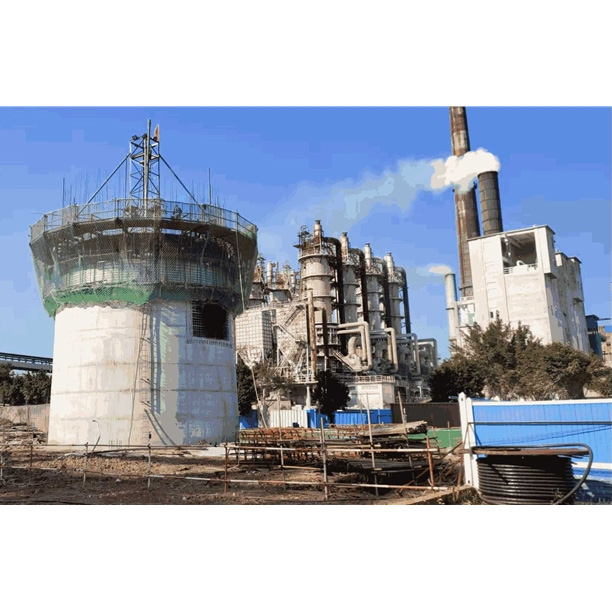Why Should You Consider a Free Standing Chimney for Your Home?
2024-12-30
When it comes to enhancing the warmth and charm of your living space, a free standing chimney could be the perfect solution. Whether you’re building a new home or upgrading your current heating system, free standing chimneys offer a unique blend of functionality, style, and efficiency. But what makes them stand out compared to traditional built-in or masonry chimneys? Let’s explore why you should consider installing a free standing chimney in your home.
What is a Free Standing Chimney?
A free standing chimney is a standalone unit that provides venting for heating appliances, such as wood stoves, fireplaces, or pellet stoves. Unlike traditional chimneys that are integrated into the structure of your home, free standing chimneys are independent and can be installed anywhere in your space. They consist of a metal or stainless steel flue pipe that leads the exhaust gases safely outside, offering flexibility in terms of placement and design.
Why Choose a Free Standing Chimney?
1. Flexibility in Installation
One of the key advantages of a free standing chimney is the flexibility it offers in terms of installation. You are not confined to building a chimney into your home’s architecture, which means you can install it wherever you like. Whether you want a chimney in the center of your living room or on an external wall, free standing models allow for easy integration into any space.
2. Cost-Effective
Installing a free standing chimney is often more affordable than building a traditional masonry chimney. There’s no need for extensive construction work or alterations to the existing structure of your home. This makes free standing chimneys a cost-effective option for homeowners who want to add a fireplace or stove without breaking the bank.
3. Ease of Maintenance
Free standing chimneys are easier to maintain and clean compared to their traditional counterparts. The metal components can be accessed more easily for cleaning and inspections, and they are less prone to the structural damage that can sometimes affect masonry chimneys. Regular maintenance will help ensure that your chimney continues to function safely and efficiently.
4. Aesthetic Appeal
Today’s free standing chimneys come in a wide variety of styles, materials, and finishes. Whether you prefer a sleek modern look with stainless steel or a rustic appeal with a blackened metal finish, there’s a design to suit any home decor. A free standing chimney can become a focal point in your living space, adding both beauty and function.
5. Improved Efficiency
Modern free standing chimneys are designed with efficiency in mind. Many models are equipped with advanced features such as air-tight seals and insulated flue pipes, which help to maximize heat retention and minimize energy loss. This can make your home more energy-efficient and reduce heating costs, especially if you use wood or pellet stoves as your primary heating source.
6. Easy to Relocate
Unlike traditional chimneys that are permanently integrated into your home’s structure, a free standing chimney can be moved if necessary. This makes it an excellent option if you want to change the layout of your space or if you’re planning a renovation in the future.
Where Can a Free Standing Chimney Be Used?
1. Living Rooms and Bedrooms
Free standing chimneys work beautifully in living areas and bedrooms, providing both warmth and a cozy ambiance. With their variety of designs, they can blend seamlessly into both modern and traditional interiors.
2. Cabins and Vacation Homes
If you have a vacation home or cabin in the woods, a free standing chimney can be a great addition. It’s an efficient way to create a comfortable atmosphere in remote locations where traditional heating methods may not be as practical.
3. Outdoor Spaces
Free standing chimneys are not limited to indoor use. Many homeowners install them in outdoor spaces, such as patios or decks, to extend their living area into the cooler months. Outdoor models are designed to withstand the elements and provide warmth while you entertain or relax outdoors.
4. Workshops and Garages
Free standing chimneys can also be used in workshops, garages, or other utility spaces. They are ideal for providing heating to large areas that may not have adequate insulation or central heating systems.
What Are the Considerations Before Installing a Free Standing Chimney?
1. Building Codes and Regulations
Before installing a free standing chimney, it’s important to check local building codes and regulations. There may be specific requirements for chimney height, clearances, and venting, especially if you are using solid fuels like wood.
2. Choosing the Right Model
Selecting the appropriate free standing chimney depends on factors such as the size of your space, the heating appliance you are using, and your desired aesthetic. It’s essential to choose a model that can safely accommodate the needs of your heating system.
3. Proper Venting
Proper venting is crucial for the safe operation of a free standing chimney. Make sure the flue is properly sized and installed to effectively direct exhaust gases outside. This will ensure that your heating appliance works efficiently and reduces the risk of dangerous carbon monoxide buildup.
4. Location and Safety
Consider the placement of your free standing chimney carefully. It should be installed in a location that minimizes the risk of fire hazards, such as away from combustible materials and with adequate clearance from walls and ceilings.
Conclusion
A free standing chimney is an excellent addition to any home, offering flexibility, efficiency, and a touch of style. Whether you're looking to enhance your living space with a beautiful fireplace or add an efficient heating source to a cabin or workshop, free standing chimneys provide the ideal solution. With easy installation, low maintenance, and a variety of designs, they can be the perfect option for homeowners seeking both form and function in their heating systems.



